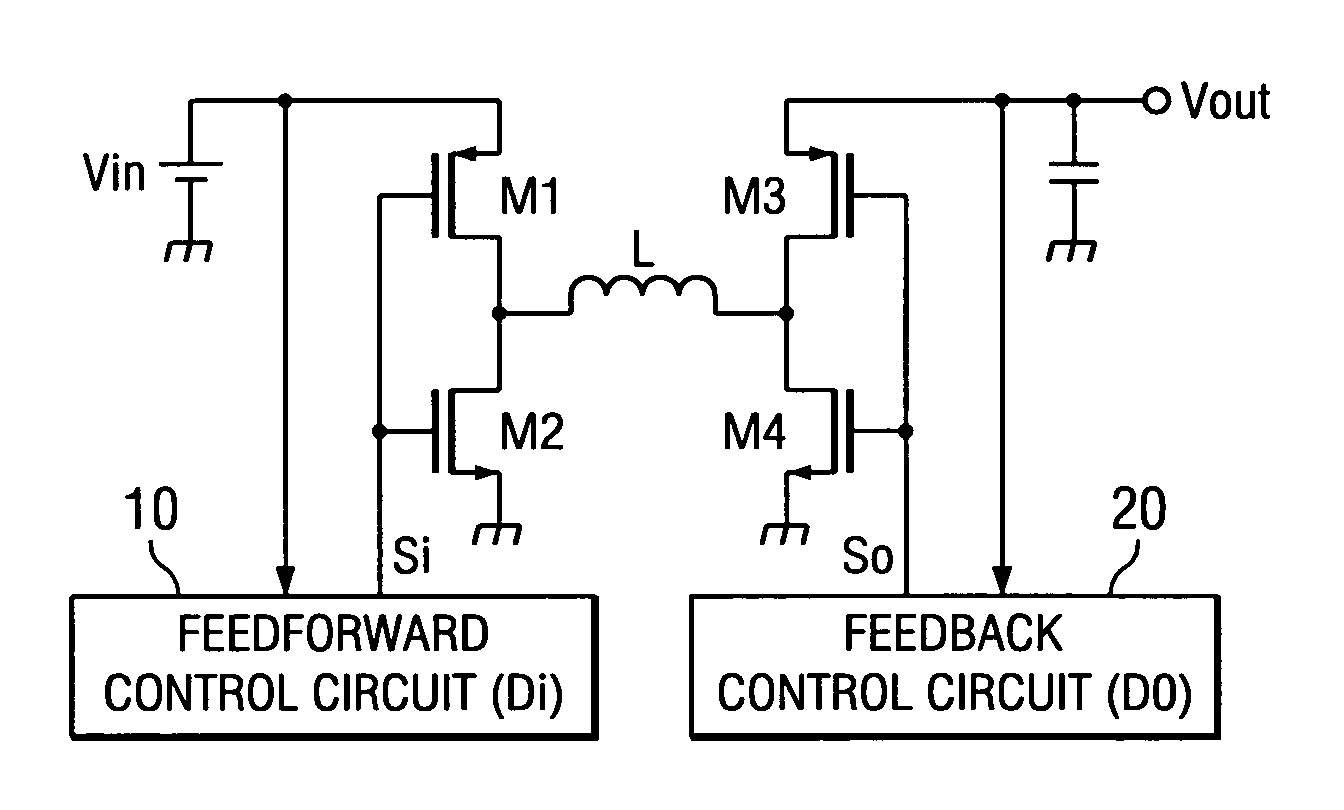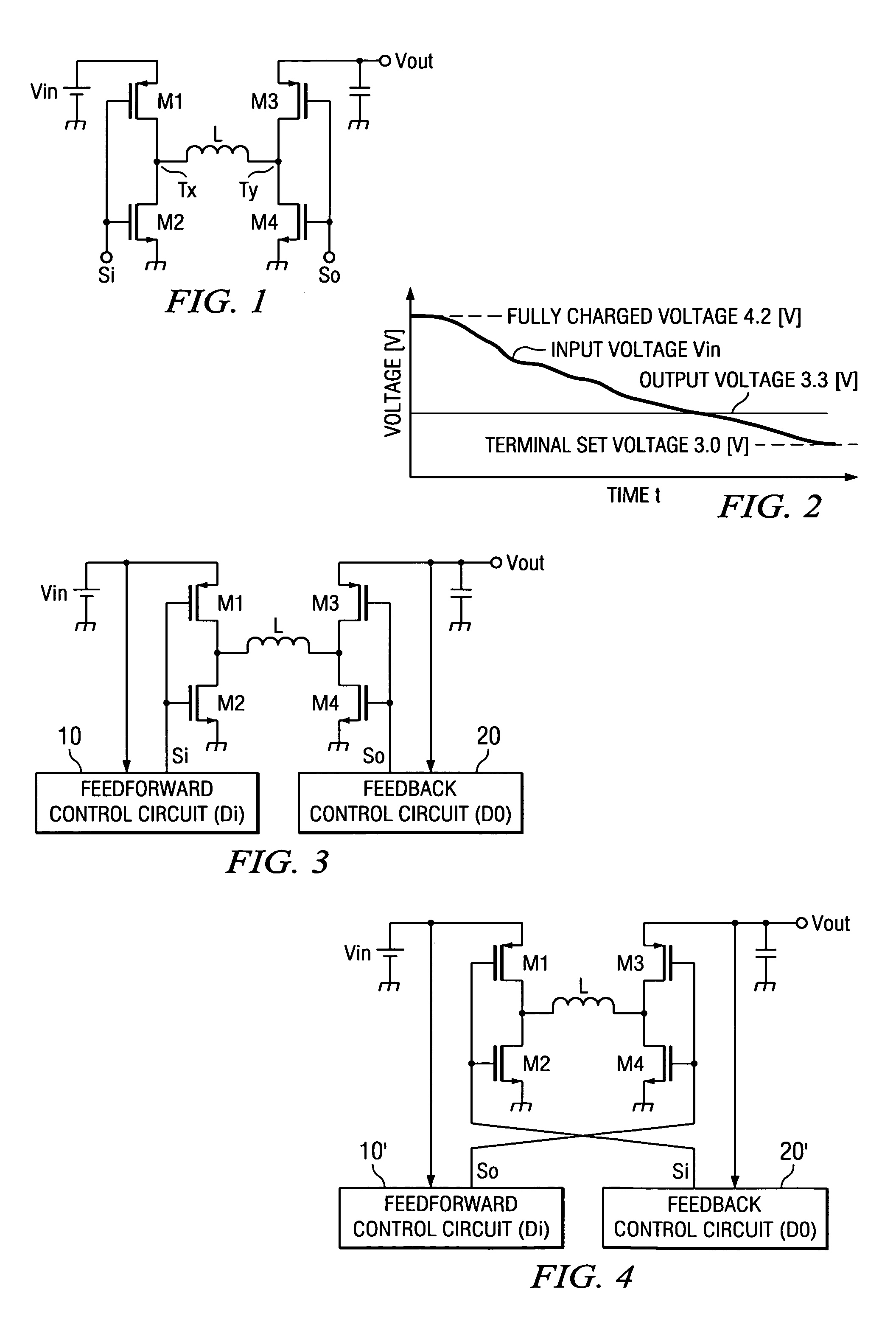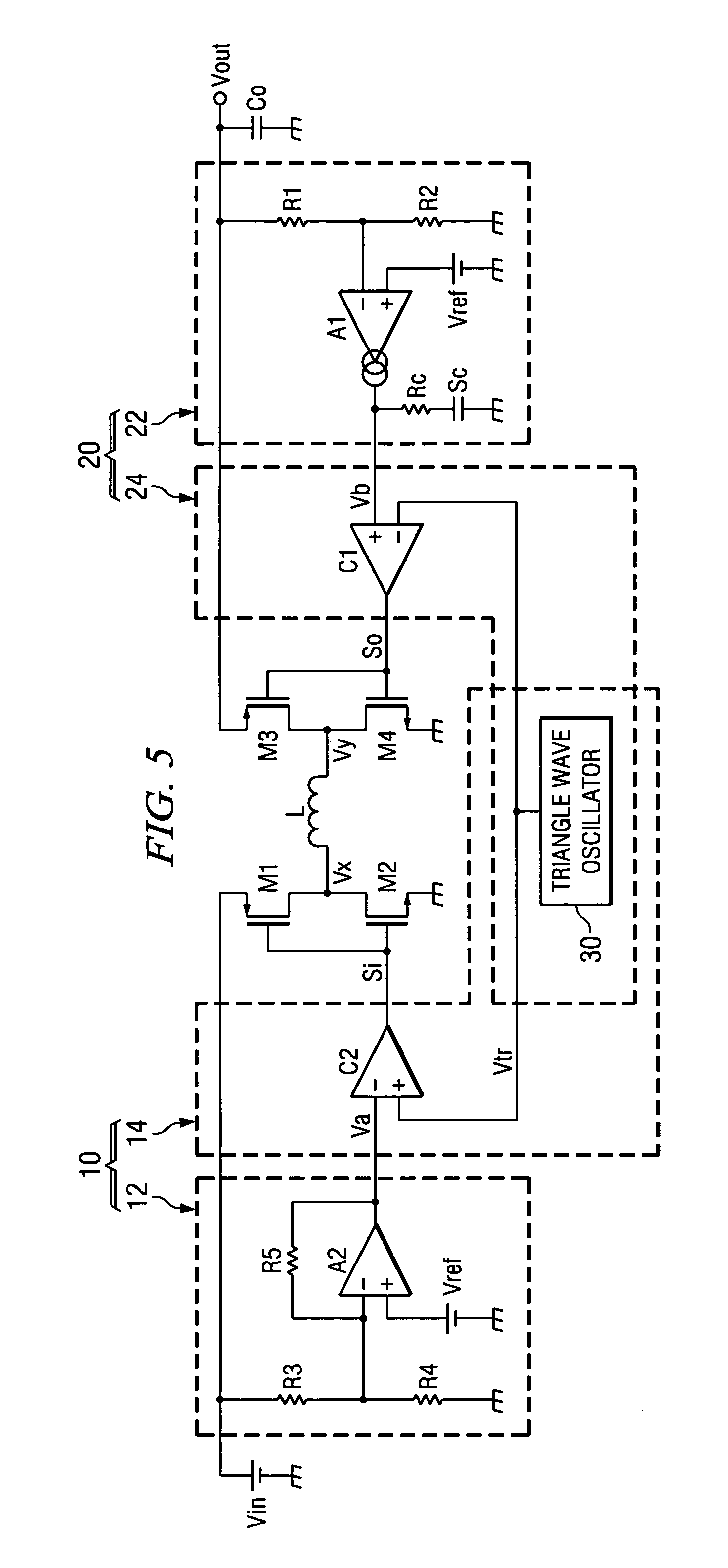DC-DC converter
a dc converter and converter technology, applied in the direction of dc-dc conversion, power conversion systems, instruments, etc., can solve the problems of low voltage conversion efficiency, high power loss caused by switching elements, inductive elements, other low-resistance components, etc., to improve the voltage conversion efficiency of dc—dc converter, small current through inductive elements, and improve efficiency
- Summary
- Abstract
- Description
- Claims
- Application Information
AI Technical Summary
Benefits of technology
Problems solved by technology
Method used
Image
Examples
Embodiment Construction
[0022]FIG. 1 is a circuit diagram illustrating the basic configuration of the DC—DC converter disclosed in the present invention.
[0023]As shown in the figure, the DC—DC converter of the present invention has the configuration of a so-called H bridge type switching regulator. The H bridge type switching regulator, as shown in the figure, includes an inductive element L (referred to as inductor L hereinafter) and four switching elements connected to the two terminals of inductor L. The switching elements, for example, comprise MOS transistors. They can also comprise bipolar transistors instead of MOS transistors.
[0024]In the example shown in FIG. 1, switching elements M1 and M3 comprise PMOS transistors, while switching elements M2 and M4 comprise NMOS transistors. As shown in the figure, switching element M1 is connected between the supply side of power supply voltage Vin and one terminal Tx of inductor L. Switching element M2 is connected between the terminal Tx of inductor L and gr...
PUM
 Login to View More
Login to View More Abstract
Description
Claims
Application Information
 Login to View More
Login to View More - R&D
- Intellectual Property
- Life Sciences
- Materials
- Tech Scout
- Unparalleled Data Quality
- Higher Quality Content
- 60% Fewer Hallucinations
Browse by: Latest US Patents, China's latest patents, Technical Efficacy Thesaurus, Application Domain, Technology Topic, Popular Technical Reports.
© 2025 PatSnap. All rights reserved.Legal|Privacy policy|Modern Slavery Act Transparency Statement|Sitemap|About US| Contact US: help@patsnap.com



